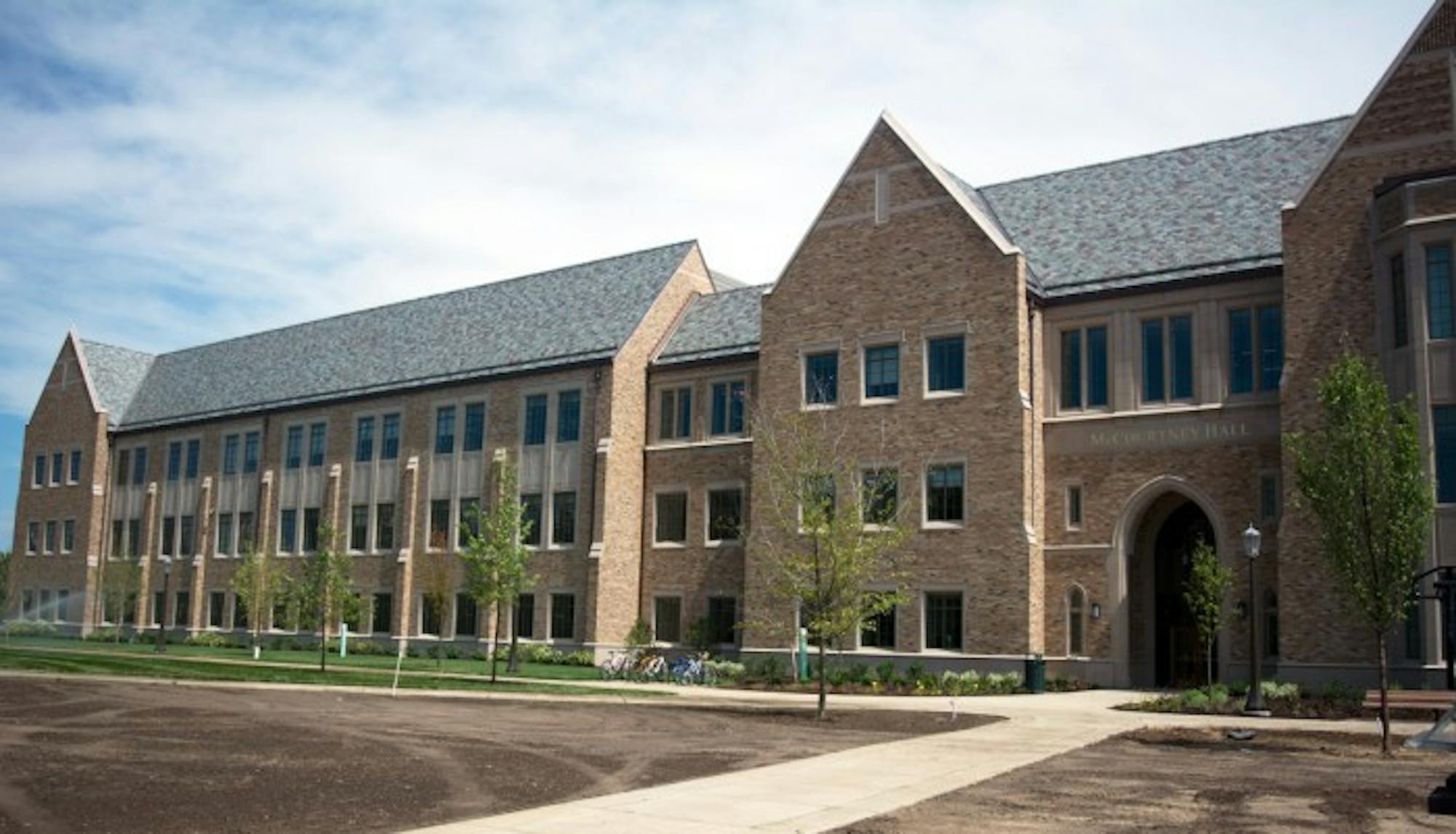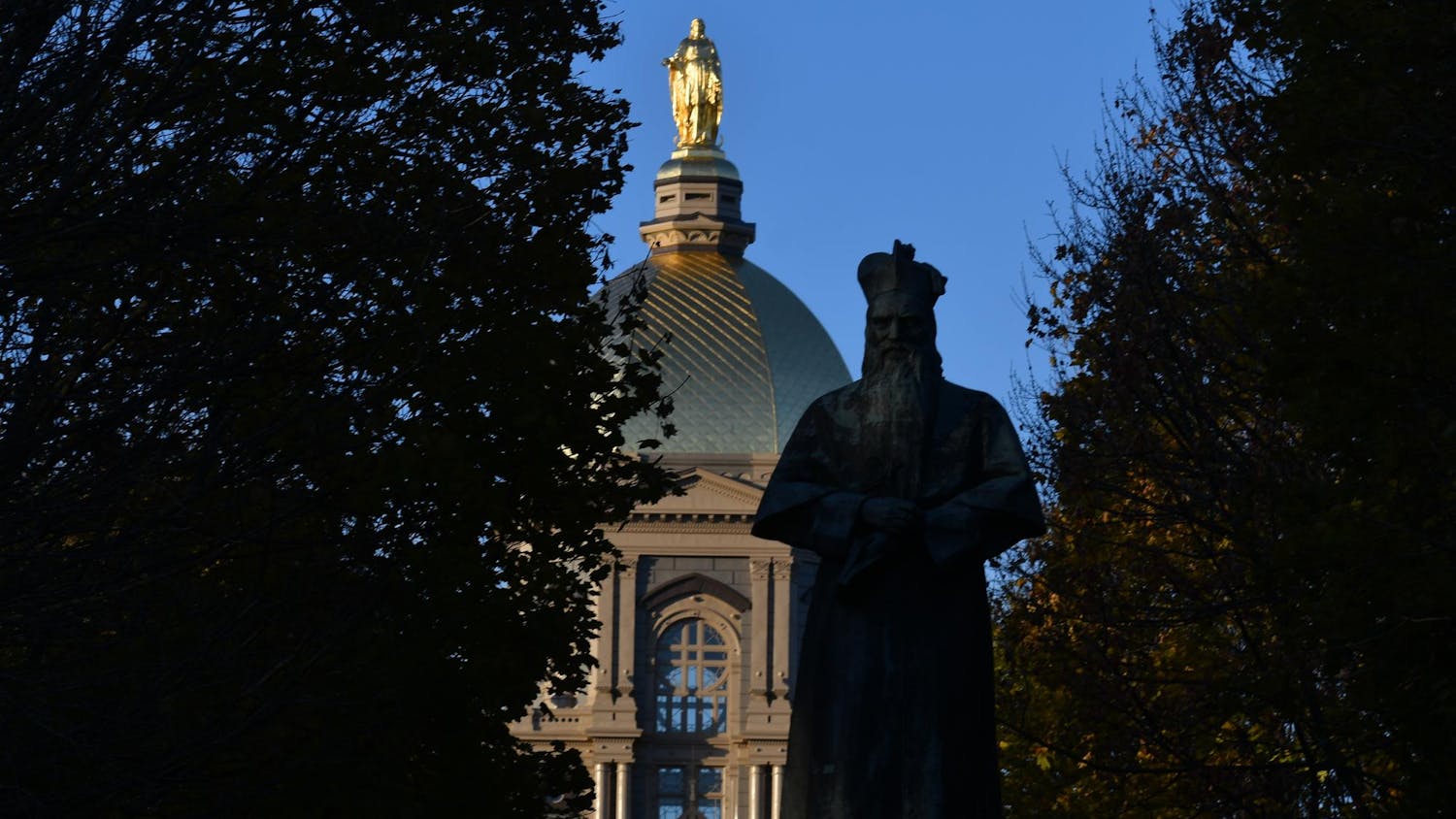
Construction on the new McCourtney Hall of Molecular Sciences and Engineering was completed over the summer, marking the end of a two year, $80 million project. Students and faculty will occupy the building at the start of the fall semester, according to a University press release.
The building, which is located on the east side of campus near Hesburgh Library, “is the first dedicated research building to be constructed in a planned larger East Campus Research Complex,” the release said.
According to Peter Kilpatrick, the McCloskey Dean of Engineering, parts of the Department of Chemical and Biomolecular Engineering, as well as a portion of the Department of Chemistry and Biochemistry, will move into the building, but the space will not be limited to those departments. Instead, faculty and students from any departments may be placed in the facility if they have large research groups or special laboratory needs.
The research conducted in the new facility will focus on creating new molecules and investigating the role of molecules in a host of applications: treating cancer, creating renewable biofuels, purifying water, separating gases, catalyzing new reactions, creating energy storage solutions and other applications, Kilpatrick said.
“The students will use a vast array of modern research equipment in their research,” he said. “ ... The collaborative nature of the work environment means that the space will be more flexible and, when additional space is needed for expanded scope of experiments, it should be available. So that is effectively like having access to larger labs. Also, the labs should be safer and better equipped.”
Kilpatrick said the faculty members who will be moving into McCourtney Hall are currently housed within the Fitzpatrick Hall of Engineering, the Stepan Chemistry Hall and the Nieuwland Hall of Science. In these buildings, the faculty and students have limited access to large-scale research labs and are unable to conduct experiments requiring fume hoods, which are critical when conducting research.
“We have many faculty members in these departments who did not have adequate modern laboratories,” Kilpatrick said.“Much modern chemical engineering and chemistry research requires very ventilation-intensive research [and] the buildings that these two departments are in right now simply do not have adequate air flow and utilities capabilities to accommodate this research. The new McCourtney Hall is much more modern, collaborative, flexible, and co-locates research in the molecular sciences and engineering, all dramatic improvements over the existing spaces.”
Kilpatrick said that the expanded space — and the equipment housed within it — will greatly benefit the hundreds of undergraduate students who will be using the facility.
“The group meetings and collaborative interactions in McCourtney should be of tremendous benefit to these students, enabling them to be even more productive in their work and enabling them to get into the very best graduate programs in the country,” he said.
In addition to helping both students and faculty expand their research goals, Kilpatrick said the new facility and updated equipment will allow Notre Dame to be more competitive overall in the field of scientific research.
“The addition of McCourtney Hall and the expanded capabilities that it gives us absolutely enables us to be much more competitive,” he said. “Whether we are now in the same league as Stanford, MIT, UCLA and others remains to be seen, but we definitely have aspirations in that regard.”
Construction finishes on McCourtney Hall
CAITLYN JORDAN | The Observer
CAITLYN JORDAN | The Observer









